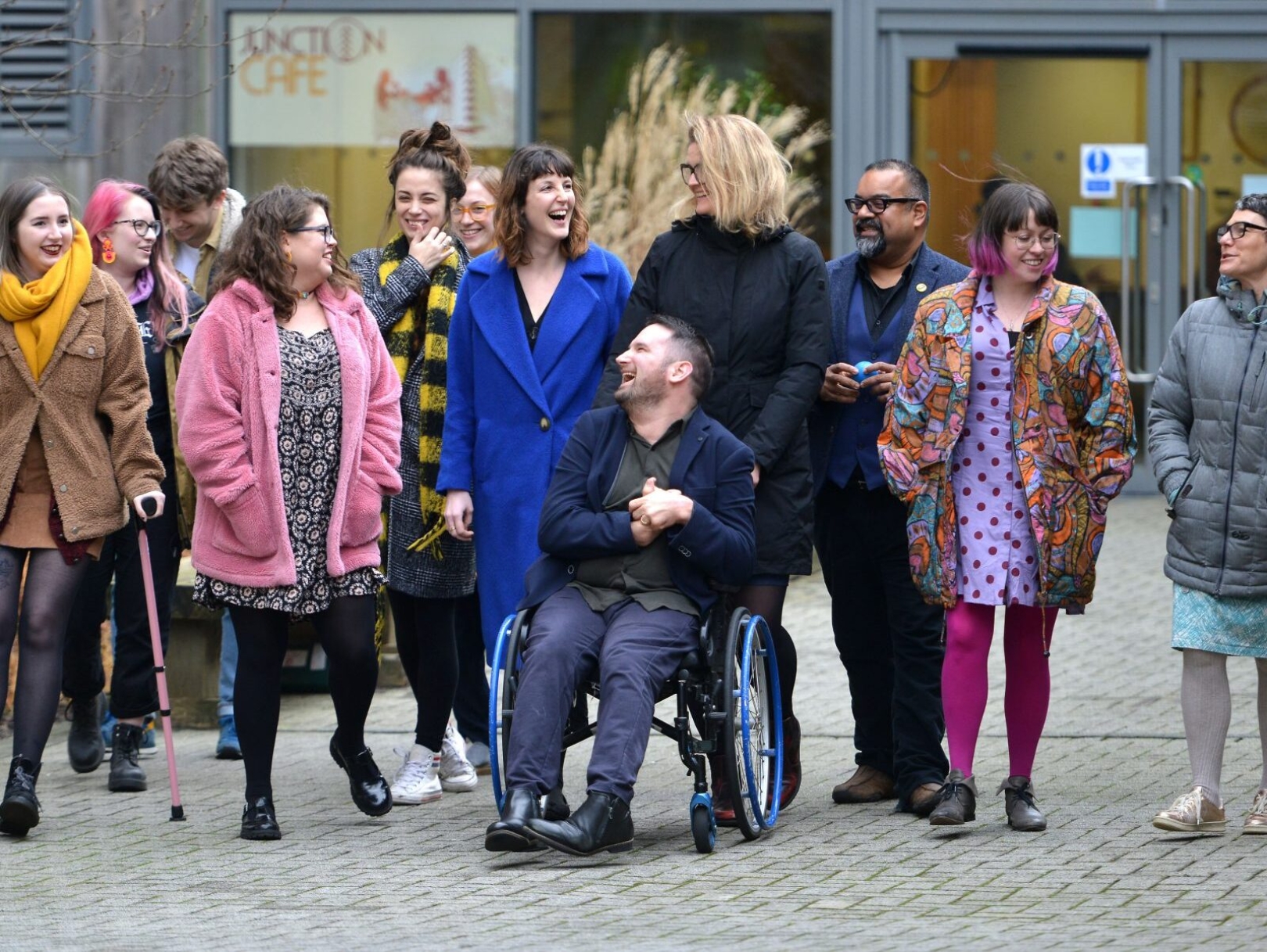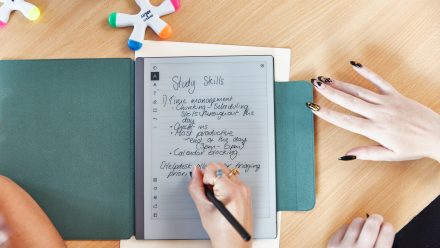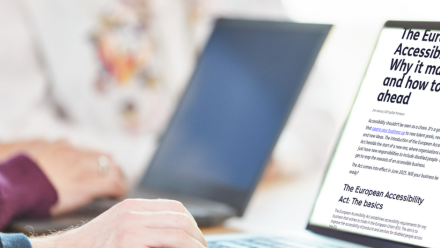A half-hearted adoption of the social model does more harm than good
27th February 2023 by Ellie Thompson
In November 2022, a campaign launched on Twitter encouraging us to endorse and sign a Parliamentary petition with the earnest goal of shifting our language to a supposedly more inclusive alternative. The petition urged the government to replace the terms ‘disability’ and ‘disabled’ with ‘people of determination’, under a misplaced understanding that ‘disabled’ implies an insufficiency, while ‘determination’ instead highlights our tenacity, resilience and ‘special skills’.
But shying away from the word ‘disabled’ doesn’t do us any favours at all; in fact, it’s one of many cases that show just how powerful and harmful language can be. Calling ourselves ‘disabled’ people is a passionate, political choice to recognise and demand accountability for the disabling barriers that prevent us from having equitable access to society. We are not people ‘with’ anything; we’re people who are facing active disablement.
Identity-first language, like we use when we call ourselves a “disabled person”, “autistic person” or “Deaf person”, forms an integral part of adopting the social model of disability. The social model forms a foundational element of Diversity and Ability’s mission, vision and progress.
Adam Hyland, Co-founder and Director of Accessibility and Inclusion at Diversity and Ability, shares what the social model of disability means to him and to our communities.
“The social model establishes that it’s society that disables people from having equitable access to all the different facets of life.
It’s not about the person’s diversity, so-called disability or so-called diagnosis; those things alone don’t stop people from having access. The fault lies with the very structure of society.
We as a society are disabling people because we live in a way that excludes people that society wasn’t designed to include. In fact, in many cases, we’re people that society was deliberately, purposefully designed to exclude.”
It’s a simple shift in language that makes a fundamental difference to how we’re treated as disabled people, both as individuals and as a community. Adam is able to list countless interactions and scenarios which highlight to him how the societal, attitudinal barriers are what form the problem, not him: “to this day, if I rock up at a hotel reception desk to check in, there are many occasions where staff will look at my PA and talk to my PA rather than me. Sometimes they’ll check with my PA if it’s okay to speak to me directly. It’s all based on the assumption that, as a wheelchair user, I don’t have the ability to have that conversation on my own.”
Some barriers may be physical, like the universal lack of accessible parking spaces, lifts and ramps. But the insidious foundation of each barrier is always much less tangible, Adam says. It’s about a fundamental lack of information, advice and guidance: “often, there are tools and strategies to remove the barriers we face. But individuals and organisations don’t even know that these tools, which are often so quick and easy, already exist.”
Take, for example, Access to Work: a government scheme that provides funding and tools to enable employees and their employers to put adjustments in place. Adam points out that, at D&A, we’ve spent years adopting the often-used denomination of Access to Work as ‘the Government’s best-kept secret’. Maybe the phrase is thrown around so much that we’ve forgotten how damning it really is. Calling it a secret isn’t a good thing; for a scheme like Access to Work to not be accessible means that, in essence, we’re not providing people with even the most basic level of reasonable adjustments.

And where does intersectionality fit in with the social model? Adam says that if you don’t recognise where barriers intersect to create disabling environments, you’re not really honouring the social model at all. Take, for example, the intersection between class, financial stability and disablement. Adam points out that “a lot of disablement can be traced back to socioeconomic backgrounds and social capital.” We know, for example, that disabled people have been particularly impacted by the cost of living crisis. Disabled people have to pay more to access things like PAs, wheelchairs, and assistive technology, and even face more direct energy payments; they have to charge power chairs, use dialysis machines and oxygen tanks, and refrigerate medications. Socioeconomic factors create a vicious cycle of disabling barriers, where experiences impact our health, which in turn decreases our social capital and raises our financial burdens, which further disables us.
It’s often thought that the social model of disability is a UK-created, and UK-centric, concept. But Adam points out that that’s a misconception:
“The social model of disability actually has global origins. It was coined in the late 20th Century in response to discourse and community movements that were happening all over the world, including the anti-apartheid movement in South Africa and North American anti-oppression groups rejecting a medicalised rhetoric around disability”.
For over 50 years now, disabled people all over the world have been fighting to be recognised as just that; disabled people, not people with disabilities: “Of course, languages and cultures are each unique and nuanced,” Adam notes, “but the base truth remains the same: we need to embed the social model across the globe because people are disabled by society across the globe. It’s true on every level, from individual, to local level, to national and, yes, global too.”
So, what does it look like when the social model is truly taken on?
On a personal level, Adam finds it easy to recognise when he, and those around him, are living the social model: “In this interview, right now, I’m not a disabled person. I mean, politically I identify as a disabled person because I live in a society that creates disabled people. But practically, right now, I’m not a disabled person because I’m not facing any barriers. I’m in my home, in a virtual meeting, I’ve got my Assistive Technology, I’ve got my PA, we’re having an equitable conversation in a safe space.”
On a communal level, he reflects on a recent success: “One of my proudest moments in the 12 years since we founded D&A only happened two weeks ago. I was talking to the EMEA Diversity, Equity and Inclusion Lead at Avery Dennison and they were telling me about their work with a local disabled person’s organisation that supports disabled people in employment. They offered to provide Avery Dennison candidate profiles including their disabilities and diagnoses next to their required adjustments to describe the people they were referring for employment support, and the EMEA Diversity, Equity and Inclusion Lead replied to say: “we don’t want or need to know their disabilities or diagnoses, we just want to know what adjustments they need.” It’s a simple switch that showed Adam that Avery Dennison was not just changing their internal narratives, but also taking that work forward and supporting societal shifts.
These small changes make monumental impacts. It’s why, Adam says, it’s crucial that we honour every aspect of the social model. Language is never just about words; it speaks to our deep-held beliefs and attitudes. The small, often simple, differences in our language and attitudes may be what hold us back, but they also have the capacity to move us forward. Embed the social model in the way you speak, act, and move through the world, and know you’re making the day-to-day differences that will blossom into global culture shifts.


